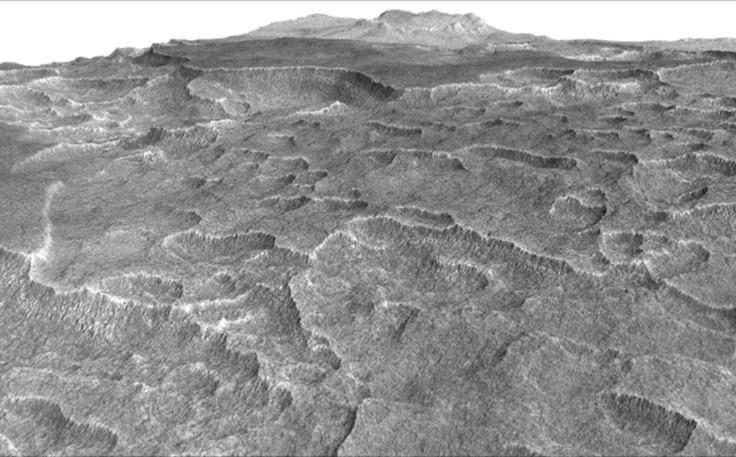Water On Mars: Ice Deposit Found Underground On Red Planet Enough To Fill Lake Superior

A large underground deposit of water ice has been discovered in the mid-northern hemisphere of Mars in a region known as Utopia Planitia. The deposit is larger in area than the state of New Mexico and the water it contains is about the same as that in Lake Superior, the largest of the Great Lakes.
The surface of Mars is too hot for any liquid water to remain there. While it is known that Mars was once rich in water, and NASA has also found in the past evidence of liquid water flowing intermittently on present-day Martian surface, no actual water has been found above ground. And while ice caps cover Martian poles, frozen water has not been found on the surface in latitudes away from the polar extremities.
The water ice under Utopia Planitia is covered by a layer about 3 to 33 feet deep, protecting it from the fierce radiation that sweeps the surface. It was discovered using the Shallow Radar (SHARAD) instrument on the Mars Reconnaissance Orbiter, and varies between 260 feet to 560 feet in thickness. Its composition is 50 to 85 percent water ice, the rest being dust or larger rocky particles, according to a NASA press release Wednesday.
Cassie Stuurman from the Institute for Geophysics at the University of Texas, Austin, and the lead author of a report in the journal Geophysical Research Letters, said: “This deposit probably formed as snowfall accumulating into an ice sheet mixed with dust during a period in Mars history when the planet's axis was more tilted than it is today.”
The find, even though it accounts for less than 1 percent of all known water ice on Mars, is important because the deposit is close to the surface and in the mid-latitude plains, therefore being a potential source of liquid water for future human missions to our neighboring planet. The exact location of the deposit within Utopia Planitia — a 2,050-mile wide basin — is also significant.

“This deposit is probably more accessible than most water ice on Mars, because it is at a relatively low latitude and it lies in a flat, smooth area where landing a spacecraft would be easier than at some of the other areas with buried ice,” Jack Holt of the University of Texas, a co-author of the Utopia paper, said.
In a blog post, Stuurman said: “If our future missions are going to have astronauts, those astronauts are going to need something to drink. With these results, we see that Utopia Planitia is a great place for that… provided you find a way to deal with all the radiation and dust storms.”
But important as the discovery is, it still brings us no closer to knowing if there is, or ever was, life on Mars. Had it been liquid water, it would have increased the likelihood manifolds but given the underground frozen water, it would preclude life as we know it, thereby limiting even how we search for life-forms we know nothing about.
© Copyright IBTimes 2025. All rights reserved.




















